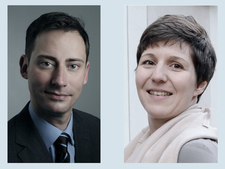-
Topics
subnavigation
Topics
Electromagnetic fields
- What are electromagnetic fields?
- Static and low-frequency fields
- Radiation protection relating to the expansion of the national grid
- High-frequency fields
- Radiation protection in mobile communication
Optical radiation
Ionising radiation
- What is ionising radiation?
- Radioactivity in the environment
- Applications in medicine
- Applications in daily life and in technology
- Effects
- What are the effects of radiation?
- Effects of selected radioactive materials
- Consequences of a radiation accident
- Cancer and leukaemia
- Genetic radiation effects
- Individual radiosensitivity
- Epidemiology of radiation-induced diseases
- Ionising radiation: positive effects?
- Risk estimation and assessment
- Radiation protection
- Nuclear accident management
- Service offers
-
The BfS
subnavigation
The BfS
- About us
- Science and research
- Laws and regulations
- BfS Topics in the Bundestag
- Links
BfS background radiation measurements now available for mobile devices
Optimised information service on the occasion of the 30th anniversary of Chernobyl
Year of issue 2016
Date 2016.04.21
Date 2016.04.21
The Federal Office for Radiation Protection (BfS) uses roughly 1,800 measuring stations to monitor the background radiation (local dose rate, ODL) in Germany. This ODL measuring network is a key early warning system in the event of nuclear accidents. BfS makes the measuring data available to the public via its website odlinfo.bfs.de. BfS has created this new information service on the occasion of the 30th anniversary of the Chernobyl am 26. April hat das BfS dieses Informationsangebot auf neue Beine gestellt.

![]() ODL-INFO: the responsive website optimised for all common mobile devices
ODL-INFO: the responsive website optimised for all common mobile devices
"The redevelopment of ODL-Info is a response to the citizens' current information behaviour"
, says BfS President Wolfram König. The website is optimised for mobile devices and makes it possible to view the nearest measuring station and its data conveniently from almost any location in Germany – easily and without having to install a separate app. The measuring stations located in a specified region of Germany can be found quickly and easily via an interactive map. A search function is available as well as a complete list of all measuring stations. The website design was completely redone and adapted to modern browsing habits.
"BfS permanently refines its measuring network for monitoring the background radiation and aligns it to the current state-of-the-art of science and technology. 30 years after Chernobyl this includes dealing with the question of how the results from radioactivity measurements can be passed on to the citizens"
, König explains.
While only fragmentary and delayed information reached the public after the Chernobyl accident, it has become natural today that information can be exchanged at any time and any place via mobile devices.
"The advances in measuring technology are only one side of the coin, only one aspect that a radiation protection authority has to deal with"
, König continues. "The best measurements are hardly of any use in the event of a nuclear emergency if the citizens doubt the credibility of such data or if authorities cannot make themselves heard with the data they have while self-proclaimed experts dominate the discussion. We will only ensure credibility if we inform the public openly, comprehensibly and according to the citizens' needs. And we must do this long before any emergency occurs. This is why it is our duty to keep the barriers to using our information services as low as possible and to make an easy access available that does not require expert knowledge. This is particularly true in times when the public attention to nuclear risks fades – and even with Germany's withdrawal from the nuclear energy programme these risks still exist."
The ODL measuring network operated by the Federal Office for Radiation Protection

![]() The ODL measuring network comprises 1,800 probes all over Germany
The ODL measuring network comprises 1,800 probes all over Germany
The ODL measuring network in its current form was integrated in the portfolio of the Ministry for the Environment, Nature Conservation, Building and Nuclear Safety as a consequence of the Chernobyl nuclear reactor disaster (in particular on the basis of the Precautionary Radiation Protection Act). The network comprises 1,800 measuring probes distributed all over Germany that constantly record the gamma radiation in the environment. This radiation called local dose rate (ODL) has two natural causes: cosmic radiation hitting the earth from space and ground radiation emitted by natural radioactive substances in and on the ground.
The ODL measuring network is a key early warning system in the event of nuclear accidents: Even a very slight increase in the local dose rate will be detected immediately. Unlike the situation at the time of the Chernobyl accident, a radioactive cloud passing over Germany would now be detected immediately and it would be possible to follow its dispersion in real time. Once the cloud has passed it would be necessary to rapidly analyse the radionuclide deposition on the ground in more detail. To this end BfS and the German federal states have more than 20 mobile measuring vehicles available. Helicopters and further vehicles are available for measuring small-scale, inhomogeneous depositions.
In addition to these capabilities for measuring the ground contamination the integrated measuring and information system also includes measuring programmes for air, water and the most important foodstuffs. So in the event of a large-scale contamination – such as after the Chernobyl accident – Germany has all the necessary measuring data available in order to estimate the radiation exposure to the population quickly and reliably and to inform the public comprehensively.
State of 2016.04.21



